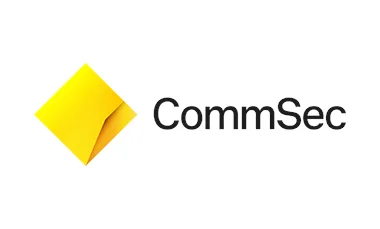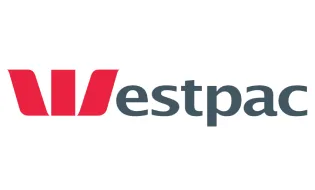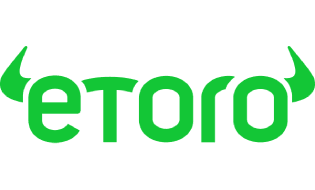
- No inactivity fee
- Australian shares from $5 per trade
- Great research tools



A self managed super fund (SMSF) is a super fund that you manage yourself, unlike a standard retail or industry fund which is managed on your behalf. This guide will give you an initial overview of what an SMSF is, how an SMSF works and how it's different to a typical super fund. If you've already got an SMSF set up, we suggest you take a look at our guide on setting an investment strategy for your SMSF instead.
An SMSF is a super fund that is managed by you and regulated by the Australian Tax Office (ATO). The purpose of the SMSF is the same as a typical super fund; to provide members money in retirement. SMSFs can have up to four members in the fund and members are often family members (although members don't need to be related at all). SMSFs come with the freedom and flexibility to invest your super however you want, though there are a number of costs involved and legal obligations to meet.
If you start an SMSF, you will be both a member of that fund as well as a trustee (unless you decide to appoint a company to act as your trustee – more on this in our SMSF trustee guide). As a trustee, you will have control over where your superannuation balance is invested and will be responsible for the day-to-day running of the fund. As a member you will benefit from the fund's investment performance and be able to use the money generated from the SMSF to help fund your retirement when you're no longer working.
Your employer will pay your super payments into your SMSF, then it's up to you to decide how you'd like to invest that money. When you're retired you can start to access the money generated by these investments to fund your lifestyle.
| Response | Female | Male |
|---|---|---|
| No | 65.08% | 63.86% |
| Yes | 34.92% | 36.14% |
While SMSFs offer great investment and tax benefits, they aren't the right option for everyone. There are a few things you must consider before setting one up, including the admin work that's required to maintain an SMSF, the various costs involved and the benefits and risks to consider.
An SMSF may be right for you if:
There are many rules applied to SMSFs and how you can invest. Here are some basic rules you need to be aware of:

Thinking about setting up a self-managed super fund? Uncover the eToro advantage. Embrace full control of your retirement savings with eToro SMSF, offering transparency with no management fees or hidden charges.
Here's how to set up an SMSF in 6 steps.
An accountant, tax agent or administrator will help set up the fund, manage its various accounts and finances and ensure you're meeting your reporting and admin obligations with the ATO. A legal practitioner can help set up your trust deed correctly (more on this in Step 3), and ensure your fund meets its ongoing legal requirements. You're not obliged to use a financial adviser but you might find it valuable to get professional advice regarding your SMSF's investment strategy.
Most importantly, you'll need to appoint an approved SMSF auditor to audit your fund each year. This is a requirement of all SMSFs.
In an individual trustee structure the SMSF assets are registered in the name of the individual trustees (the fund members themselves). However, with a corporate trustee structure the assets are registered under a company (who acts as the trustee), and the SMSF members act as directors.
An individual trustee structure is lower in management costs but has more admin. A corporate trustee structure is easier if the fund frequently changes members, as assets are held under the company name rather than the individual trustees' names.
You can read more about SMSF trustee structures and trustees' responsibility in our separate guide.
The trust deed is a legal document that outlines the rules of the fund, how it will be operated and lists all members. An accountant, administrator or tax agent must prepare the trust deed and ensure all SMSF members sign and date it. The trustee declaration is another document that highlights the responsibilities of all trustees as regulated by the ATO. Each SMSF trustee and director will sign their own declaration within 21 days to keep on file for a minimum of 10 years.
You must register your SMSF with the ATO within 60 days. You can register for an Australian Business Number (ABN) and Tax File Number (TFN), and elect the ATO to regulate your SMSF through the Australian Business Register. Once you register the SMSF with the ATO, you can register for an electronic service address. This is an Internet address for your SMSF that your fund administrator will provide you. You employer will use this address to send contributions to the fund.
You need to open an SMSF bank account in your fund's name that is separate from all your members' personal bank accounts. This account is used for the fund's general cash flow, eg to pay any expenses or penalties, and receive investment returns such as rental income.
You can now roll over any existing super you might have with another super fund into your new SMSF. You aren't required to do this by law, but it's definitely a good idea so you're not paying multiple sets of fees across numerous funds. Simply fill in a 'Rollover Initiation Reques't form (available on your fund's website) that transfers your balance over into your new SMSF. Thinking about setting up a self managed super fund? ESUPERFUND can help you create an SMSF and take control of your retirement. There is no minimum amount required and ESUPERFUND handles the annual compliance obligations for you.ESUPERFUND

ESUPERFUND
SMSF Set up | Tax | Audit | Compliance | Admin
If one member of the SMSF wishes to leave the fund, they can do this at any time. The member will need to organise for their superannuation benefits to be rolled over to their new fund. If all members wish to close the SMSF, here are the necessary steps you should take:
Our team of expert analysts employs an objective rating system to determine our award winners. All fund data is supplied to Finder by the leading super research firm, Chant West. Funds that were closed to the public or were private, as well as funds available only through a certain employer, were excluded from consideration.
The methodology for selecting top picks for SMSFs on Finder's website should encompass, but not be limited to, the following criteria:
Keep in mind that there are more features to consider, and these criteria serve as a foundational guide for selection.
You can contribute to your SMSF by rolling over your current super balance into your new fund, having your employer contribute the super guarantee into your SMSF and/or make personal contributions yourself.

It's a good idea to roll over your current super balance into your SMSF, to save from paying multiple fees. You can easily do this online in less than 10 minutes. Plus, learn more about the benefits of making contributions to your SMSF.
Learn the responsibilities and obligations of SMSF individual and corporate trustees, including the trustee declaration requirements.
An SMSF service can help you establish your self-managed super fund, and assist with ongoing admin and management of the fund. Here are the pros and cons.
Understand the pros and cons of self managed super funds, including tax benefits and investment risks, before you open your own SMSF.
Learn how to roll over your super into your SMSF and make contributions into the fund.
How much does it cost to set up and run an SMSF? How large does your balance need to be for an SMSF to be cost-effective? Find out here.
SMSF term deposits offer a secure and steady way to boost your retirement balance, so here’s what you need to do to open an account.
Learn how to develop a strong SMSF investment strategy and what assets you can and can't invest in. Want an SMSF investment property? There's a few things to consider first.
I have superannuation and I am the sole beneficiary. If in case I apply for an aged pension, does my fund payment be counted as an income and affect my eligibility?
Hi Johnny,
Thanks for getting in touch with Finder. I hope all is well with you. 😃
It is worth noting that your superannuation is not considered by Centrelink until you become eligible for the age pension. For this reason, once your age pension kicks in, the value of the superannuation can be counted in both the assets and income test.
So, yes, your super will affect your eligibility for the aged pension. To know more information and get a more personalised answer, you may directly get in touch with Centrelink.
I hope this helps. Should you have further questions, please don’t hesitate to reach us out again.
Have a wonderful day!
Cheers,
Joshua